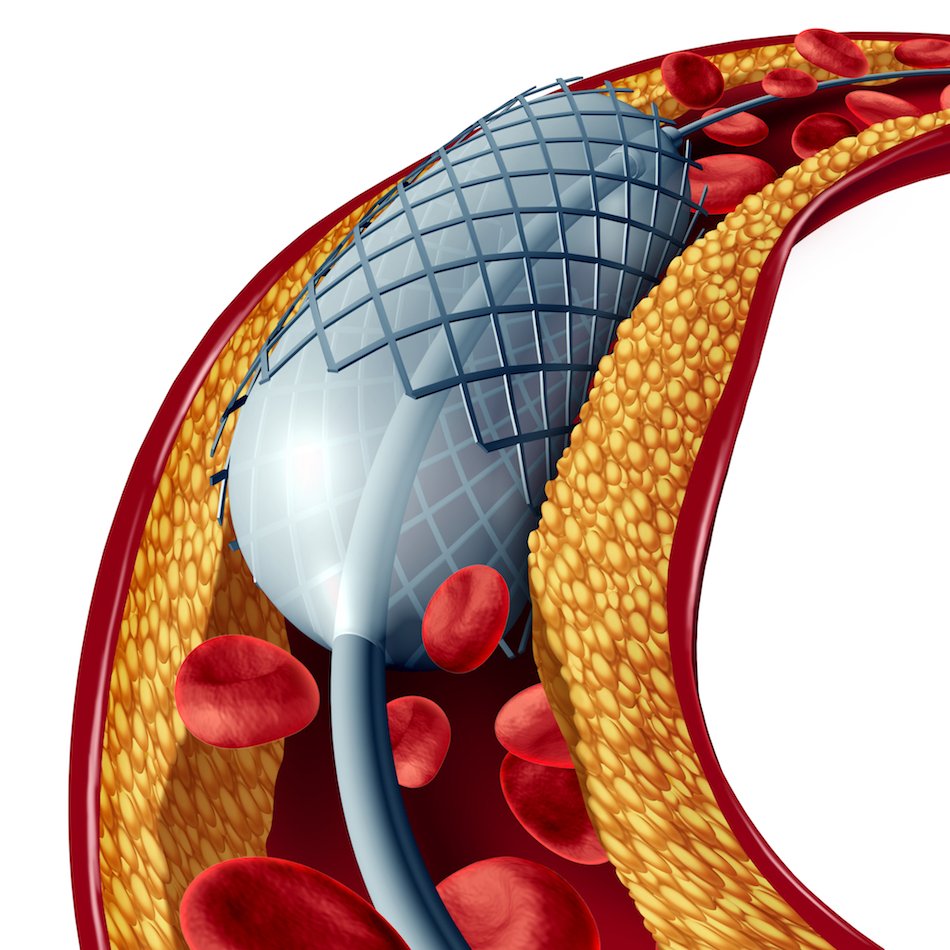Angioplasty is a surgical procedure to dilate a coronary artery. The purpose of angioplasty is to restore blood circulation following arterial occlusion. It is used in the case of a narrowing of a blood vessel or coronary stenosis.
Angioplasty is a technique that unclogs narrowed or blocked arteries of the heart (coronary arteries) without major surgery.
When blood circulation is impaired, this results in different symptoms:
• Pain in the legs, during exercise or at rest (iliac artery);
• Angina pectoris (coronary artery);
• Hypertension, renal failure (renal artery);
• Stroke with hemiplegia, speech loss, visual disturbances (carotid artery).
Duration of hospital stay
2 to 3 days.
The operation is performed under local anesthesia.
Average length of stay
3 to 7 days.
It is important to rest after the operation.

Every year, nearly 11 million patients go abroad in search of medical care. At MEDICAIM, we provide our patients with access to the best hospitals and doctors around the world. Contact us to learn more about your treatment options.
Ask for your free quote abroad
Start your medical stay by requesting a quote. Our customer service department will help you find the clinic that best suits your needs and get you a quote.
Blood tests are sometimes necessary before angioplasty. Your doctor may ask you not to smoke before and after angioplasty, it is best to quit smoking completely to ensure better results.
Before an angioplasty, you should not eat anything 6 to 8 hours before the procedure. As a general rule, you can continue to take your medications, but it is a good idea to discuss them with your doctor. If you are taking an anticoagulant, the doctor may ask you to stop taking it 5 days before the procedure. Finally, if you are taking insulin, it may be necessary to change the dose.
Angioplasty consists of inserting a deflated balloon attached to a probe to the place of occlusion. A slight incision is made in the thigh under local anesthesia. The catheter is then inserted into the femoral artery.
Once at the obstruction site, the balloon is inflated using a syringe equipped with a pressure gauge to compress the atheroma plaque against the wall. This has the effect of increasing the diameter of the coronary artery.
The balloon is then deflated to restore blood circulation. To prevent a plate from re-forming, a stent is often placed around the probe.
It is a metal prosthesis in the shape of a tube. Once the balloon is inflated, the stent expands and adheres to the artery wall.
Once the catheter is removed, the stent remains in place and keeps the artery open.
The intervention lasts on average between **45 and 90 minutes.
The procedure is not painful and does not require a long recovery. The duration of hospitalization varies from *2 to 3 days*. In case of stent placement, treatment should be followed for several months.
Stents can sometimes last up to 15 years.

The recovery time after an angioplasty is about one or two days, the patient can be discharged from the hospital the same day or the next day.
To avoid bleeding, the area where the catheter was inserted is covered with a bandage.
Doctors can prescribe drugs to prevent blood clots from forming.
Usually, the patient starts walking again after 2 to 4 hours.
If the doctor considers that the postoperative signs are positive, the patient can be discharged from the hospital.
Potential risks:
• Allergic to contrast agent
• Bleeding at the catheter insertion point;
• Removal of atheroma plaque that could potentially trigger a myocardial infarction or stroke, damage to the artery requiring corrective surgery.
Some complex diseases such as cancer can lead some patients to seek a second medical opinion. Almost 50% of patients using the second medical opinion have seen their treatment options evolve. Seeking a second medical opinion is perfectly legitimate when faced with a serious illness.
Click here to find out more about the second MEDICAIM medical opinion
MEDICAIM takes care of the follow-up on a case-by-case basis. www.medicaim.com
MEDICAIM is looking for the best specialists for you and we will offer you several renowned doctors.
MEDICAIM organizes your entire stay for you: post-operative nursing care, biological follow-up, therapeutic, nutritional and psychological support.
Any additional questions? Ask your MEDICAIM doctor about it: careteam@medicaim.com
Some needs and conditions are more complex than others. In case of doubt, please send us additional information to establish a customized quote.
Ask for a quoteCertains besoins et pathologies sont plus complexes que d’autres. En cas de doute, faîtes-nous parvenir des informations complémentaires pour établir un devis sur-mesure.
Demander un devisEntrust us with your medical file and it will be examined by a specialist doctor. The goal?
Allow you to evaluate all your treatment options.